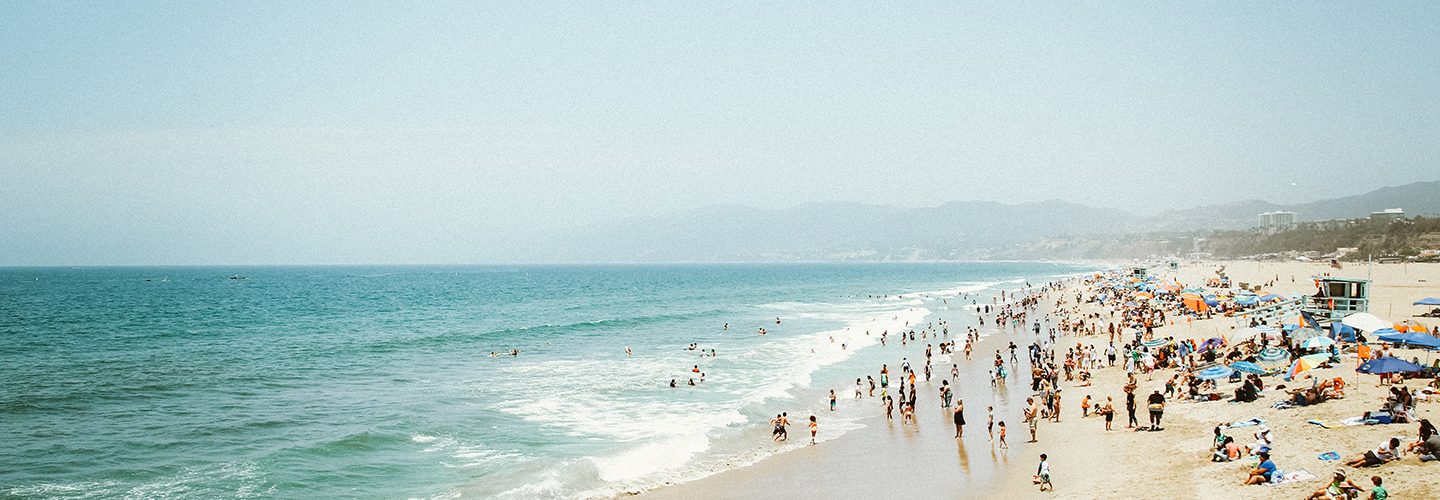Caryl Hart and Nina S. Roberts
On August 2, 2019, a cliff collapsed at Leucadia State Beach, near Encinitas in southern California. Three women were killed while enjoying a beautiful summer day. The evening before, those walking in the area noticed that the rising tide had essentially eliminated the sandy beach, and that the ocean was pounding the fragile, sandstone cliffs along the shore. In spite of what appeared to be a dangerous situation, beachgoers filled the area the next day, disregarding cautionary visitor use signs and other warnings. They did what people do throughout California—and the world—every day, seeking out the beauty, recreational opportunities, and the pure joy of a leisurely day at the beach. However, we are extremely concerned and disheartened that tragedies like what occurred in Encinitas will become more common, and that irreplaceable opportunities are disappearing as sea levels rise and the responding coastal armoring and seawalls gradually threaten, and ultimately erase, public parks along our coasts nationwide.
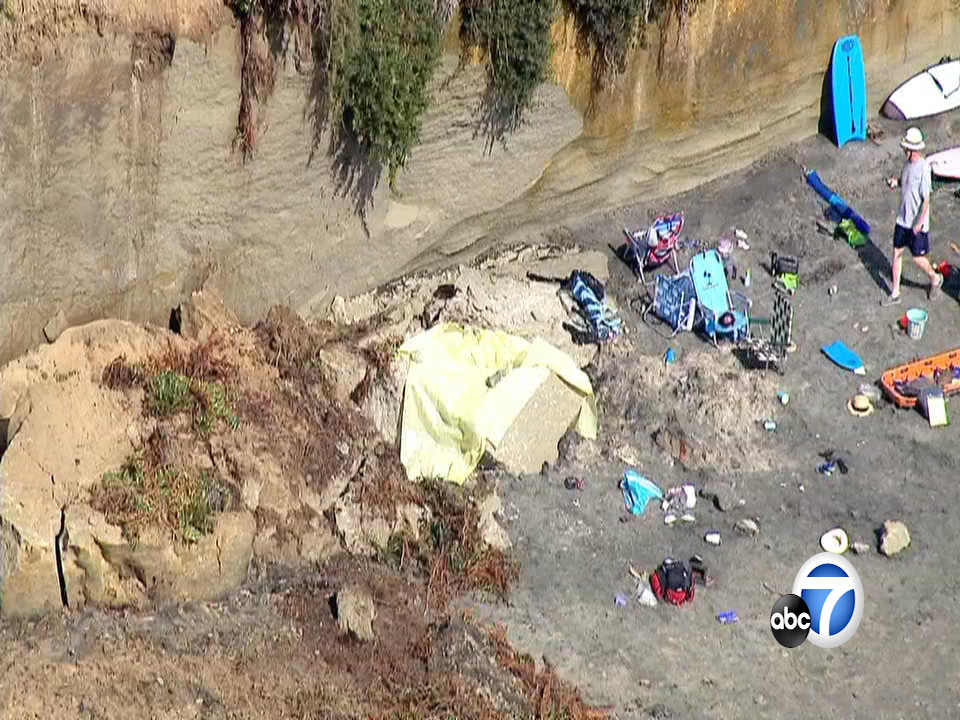
California, as a premier case example, is experiencing sea-level rise at an increasing pace. Stable for over 7,000 years, the California coastline is now in a whole new phase, with sea-level rise increasing from what was less than 4 inches (10 cm) per century to a currently projected 10-foot rise by 2100 (Griggs et. al. 2017). While addressing vital infrastructure is a critical focus of most of the planning work, lands in public trust along the coast are at the greatest and earliest risk. Our fear is that much of our extraordinary coastlands within the state park system, managers of 280 miles of the spectacular 1,100-mile California coast, could largely be lost. These are a part of the fragile open spaces, natural wonders, and coastal meccas that have been preserved for over a century in federal, state, county and regional parks. They include areas where hundreds of millions of tax dollars have been spent, and on which California’s $664 billion coastal economy depends. According to the National Ocean Economics Program, “California’s 19 coastal counties generated $662 billion in wages and $1.7 trillion in GDP in 2012, which both account for 80 percent of their respective state totals” (ERG 2015: 1). It is our conviction that the potential loss of these beaches, from an ever-expanding and heating ocean combined with extreme tidal surges, demands a robust public response which, to date, has not emerged.
Is this an environmental justice issue? Indisputably, yes. Public access was the actual “issue” propelling Proposition 20 to passage in 1972; this created the California Coastal Commission, authorizing the state of California to regulate development within the coastal zone.. At that time, environmental justice was not in our political lexicon; that term would not emerge until the 1990s. However, there was mounting concern that development of much of the coast would eventually mirror that in Malibu and similar wealthy communities, and would, therefore, limit access to the multitude of lower-to-middle-income coastal residents. Today, a growing body of knowledge depicts great variation of climate change impacts across diverse socioeconomic populations and socially vulnerable groups (e.g., EPA 2017; see ClimateJusticeAlliance.org). We have observed time and time again the gradual loss of public beaches as a result of oceanfront landowners protecting their own properties with seawalls and barricades, causing the rising tides to surge even deeper onto unarmored public trust lands. In simple terms, the construction of a seawall blocks the ocean’s ability to migrate landward, eliminating the creation and maintenance of wetlands and sandy beaches. Additionally, to our dismay, seawall construction on public beaches results in a taking of valuable public property and the creation of an unsightly humanmade object on an otherwise natural shoreline and, over time, the potential elimination of the public beach.

Other states from Florida to Maine, and all along the West Coast from Bellingham to Baja, have similar challenges in many communities most susceptible to the power of the ocean. Longstanding, reputable organizations—including the NAACP (National Association for the Advancement of Colored People)— are spreading the crucial message that the most vulnerable communities are being devastated by the increase in storm severity, and that people of color and low-income communities are losing their homes to rising sea levels (NAACP 2019).
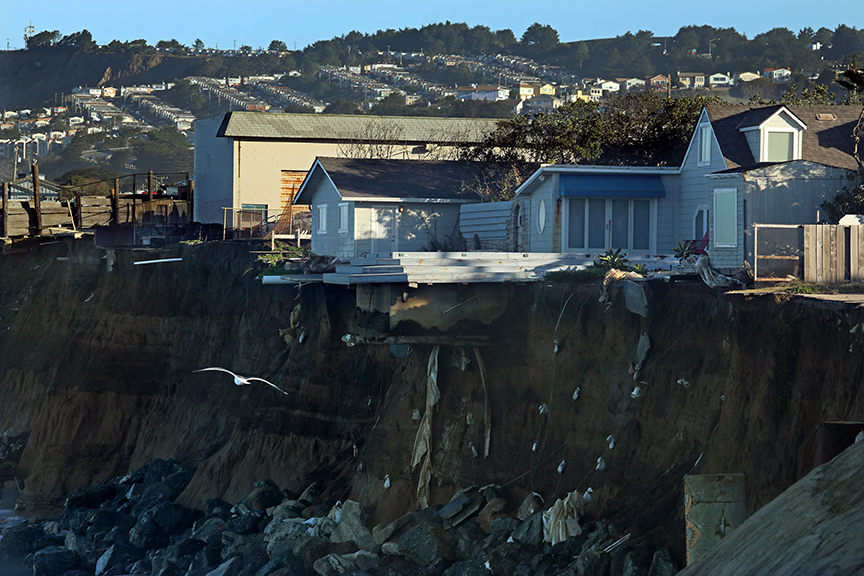
The cards have been dealt; our coasts are in severe danger. Clearly, we cannot depend on action by the federal government as the current administration “inside the beltway” continues their attack on climate science. Mention of “climate change” has been eradicated from federal science reports, government websites, and press releases (e.g., Waldman 2019). Furthermore, all climate change research by federal agencies governing parks and public lands has essentially been placed on a temporary moratorium by the administration, including unjustifiable gag orders being inflicted upon government employees and scientists (see Caffrey 2019).
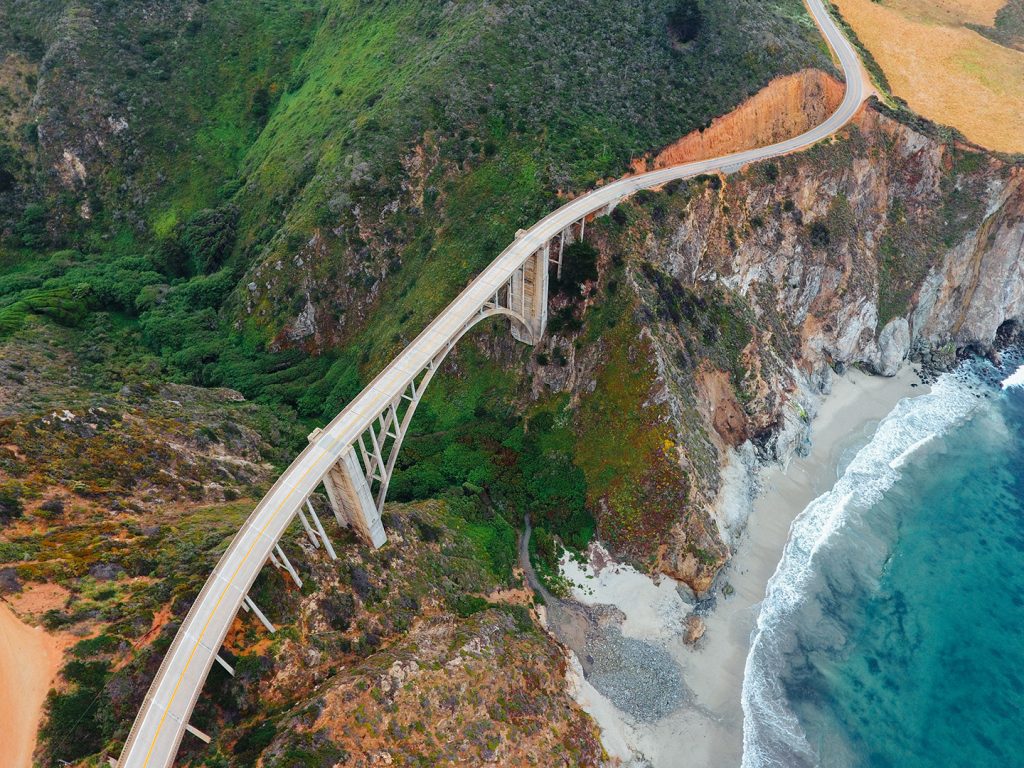
We are pleased that California, as previously mentioned, has for many years been working to address the challenge of climate change and specifically sea-level rise since the adoption of the Coastal Act, passed by voters nearly 50 years ago (in 1972, as noted, and by state statute in 1976). This action was an imperative and the creation of the California Coastal Commission was coupled with a clear mandate to preserve public access and protect our coastal zone from unregulated development. While sea-level rise was not mentioned in the original act, an amendment in 1992 addressed this treacherous issue and directed the commission to seek technical expertise:
The Legislature further finds and declares that sound and timely scientific recommendations are necessary for many coastal planning, conservation, and development decisions and that the commission should, in addition to developing its own expertise in significant applicable fields of science, interact with members of the scientific and academic communities in the social, physical, and natural sciences so that the commission may receive technical advice and recommendations with regard to its decision making, especially with regard to issues such as coastal erosion and geology, marine biodiversity, wetland restoration, the question of sea level rise, desalination plants, and the cumulative impact of coastal zone developments. (See Section 30006.5, Legislative findings and declarations, technical advice and recommendations.)
Since that time, the Coastal Commission has enacted a number of regulatory guidance documents, including the adoption of their Environmental Justice Policy in March 2019. This policy specifically allows for the consideration of environmental justice and the equitable distribution of environmental benefits throughout the state when reviewing proposed coastal development projects. It recognizes that the burden of restricted coastal access, which is disproportionately borne by low-income and minority communities, will worsen as public beaches narrow over time due to sea-level rise and less and less beach being available for public recreation (California Coastal Commission, Environmental Justice Policy, March 19, 2019).
While the Coastal Act regulates the activities of the Coastal Commission and local jurisdictions through the adoption of local coastal plans, we encourage the new administration to issue guidance to the park agencies within California to address the challenges of sea-level rise. The state of California’s Coastal Conservancy has been a model in their intentions and actions by promoting environmental equity and justice through community grants, implementation projects to mitigate environmental justice issues, designing low-cost visitor accommodations, and more (Coastal Conservancy 2017). However, a new document must be drafted that is specific to the parks, and which would provide compulsory guidance on assessing impacts and protecting the state’s public beaches. Now is the time for action by our state (and federal) leadership on this global issue. These are grave environmental warnings, which we ignore at our peril.
Admittedly, chronic underfunding of the California Department of Parks and Recreation has largely resulted in very little visible planning or action on sea-level rise. Nevertheless, research abounds, and the time has come for California State Parks and other coastal land managers to implement results and recommendations from existing, and extensive, research as well as create and execute a thorough action plan for all state beaches. This is particularly true given that 25% of the California coast is within the state park system. Further, our state park managers are subject to a 2008 executive order on climate adaptation, which specifically directs state public agencies to consider sea-level rise as part of planning projects (i.e., EO-S-13-08 directs state agencies to plan for sea-level rise and climate impacts through coordination of the state Climate Adaptation Strategy). Similarly, as decisionmakers consider the issue of environmental justice and equitable access to parks adjacent to our oceans, preserving the public’s right of access to public beaches must remain in the forefront, as well as the acquisition of landward property required to retain this access. We believe that state parks, and other park operators (e.g., county, national), must continue to recognize the challenges from construction of seawalls and other coastal armoring, on their own land as well as private property. Given the threat to public access, which will particularly impact those who have no private access to the coast, an intensification of work on sea-level rise is urgently needed by state and local park agencies.
In an era of climate change, access to the ocean and beachfront parks will be more important than ever for the cooler coastal temperatures they offer. The beaches provide critical relief from inland heat, and increased opportunities for outdoor recreation including walking, swimming, surfing, tide pooling, and more. For many years, coastal access advocates have fought to maintain beach access over efforts of private landowners seeking to prohibit such access to so-called “private” beaches. Here we make the argument that sea-level rise presents an even greater threat, especially to low-income populations. It is our hope that government agencies recognize that problems to be solved must include the very communities many agencies speak about attempting to reach. Further, we believe it is imperative for a sustainable future that park managers take this one step further and work to protect public beaches from efforts by private landowners to erect seawalls that direct the erosive power of the oceans to public beaches. In addition, we challenge public land managers to come to terms with the severe impact of sea-level rise on their own built facilities, and begin to look at managed retreat versus seawalls or other coastal armoring. Coastal science indicates that dunes and other beach features have a tendency to migrate landward (e.g., Elko et al. 2016). As sea levels rise, this natural migration will only increase and worsen. Therefore, we implore coastal land managers to not only plan for this new reality, but also work closely with local and state government leaders, and funders, to acquire additional parkland to ensure that public beaches around the world will still be there for future generations. This is not a cliché but a reality.
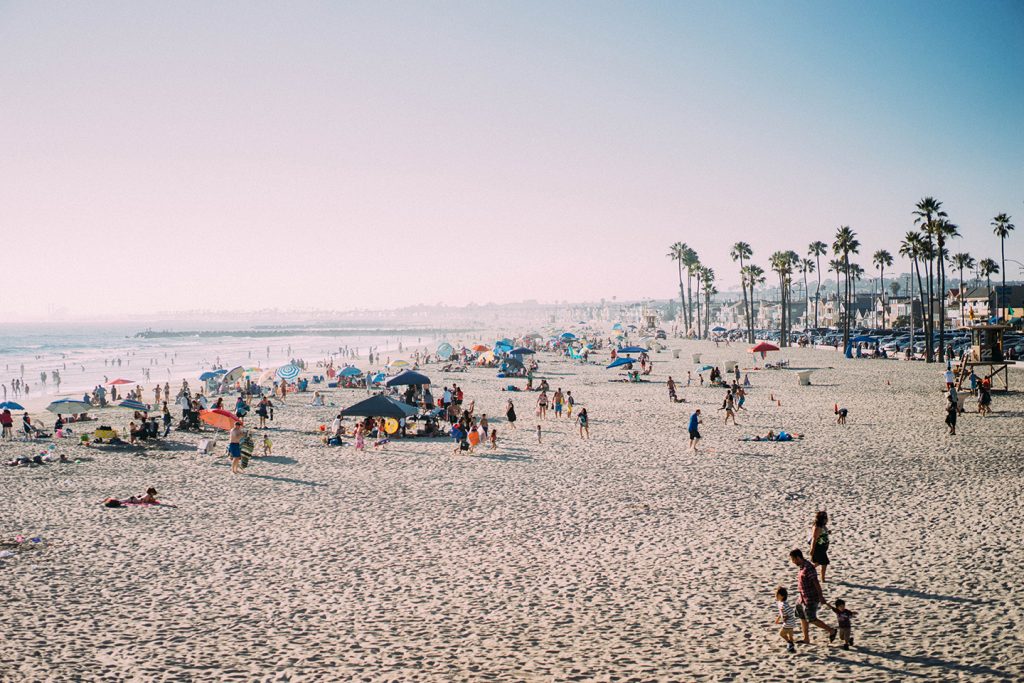
While we recognize funding is important, no amount of money or modification of
legislation will change what is taking place. The globe is heating up immensely
and the impacts are dramatic along coastlines everywhere. The third National Climate Assessment (released in 2014) notes
there is strong evidence to suggest the costs of inaction are 4 to 10 times
greater than the costs associated with proactive adaptation and hazard
mitigation (Moser et al. 2014). Thus, to delay action is to create a costly
scenario at a deadly ratio of 4:1 for advanced planning versus waiting for
disaster to strike. It is critical
for California, and other coastal areas effected, to take proactive steps to
address the impacts sea-level rise may have on their economy, natural systems,
built environment, human health, and ultimately, way of life. This call to action
for continuing and improving management strategies and techniques goes beyond
mere policy. As individuals, we must all commit to focus on making fundamental changes
within ourselves, and in our own behavior, if we truly desire to be part of the
transformation we are hoping for. This issue transcends all demographic
profiles, leaving those with fewer resources, and lack of power and privilege,
without a voice to participate in decisions impacting their communities. We
hope you, as readers of this new Forum,
take this message seriously and use your influence towards action!
The views expressed in editorial columns published in Parks Stewardship Forum are those of the authors and do not necessarily reflect the official positions of the University of California, the Institute for Parks, People, and Biodiversity, or the George Wright Society.
References
California Coastal Act. October 1972. 16 USC 1451–1464.
Caffrey, M. 2019. I’m a scientist. Under Trump I lost my job for refusing to hide climate crisis facts. The Guardian (July 25). https://bit.ly/2LHref0. Accessed August 2019.
Coastal Conservancy, State of California. 2018. State Coastal Conservancy Strategic Plan, 2018–2022. Oakland: State Coastal Conservancy.
Eastern Research Group, Inc. 2015. National Significance of California’s Ocean Economy. (Written under contract for the NOAA Office for Coastal Management.) https://bit.ly/2gTZIYK23. Accessed August 2019.
Elko, N., K. Brodie, H. Stockdon, K. Nordstrom, C. Houser, K. McKenna, L. Moore, J. Rosati, P. Ruggiero, R. Thuman, and I. Walker. 2016. Dune management challenges on developed coasts. Shore & Beach 84(1): 15–28.
Griggs, G., J. Árvai, D. Cayan, R. DeConto, J. Fox, H.A. Fricker, R.E. Kopp, C. Tebaldi, and E.A. Whiteman. 2017. Rising seas in California: An update on sea-level rise science. California Ocean Science Trust, California Ocean Protection Council Science Advisory Team Working Group. https://bit.ly/2zr0s2i. Accessed August 28, 2019.
Moser S.C., M.A. Davidson, P. Kirshen, P. Mulvaney, J.F. Murley, J.E. Neumann, L. Petes, and D. Reed. 2014. Coastal zone development and ecosystems. In Climate Change Impacts in the United States: The Third National Climate Assessment. J.M. Melillo, T.C. Richmond, and G.W. Yohe, eds. US Global Change Research Program. Washington, DC: US Government Printing Office, 579–618. doi:10.7930/J0MS3QNW.
NAACP [National Association for the Advancement of Colored People]. 2019. Environmental and climate justice. https://www.naacp.org/issues/environmental-justice/. Accessed August 28, 2019.
Scoville, A. 2019. Boulder climate scientist sues Trump administration over matter of “scientific integrity.” Colorado Public Radio: CPR News, July 29. https://bit.ly/2Lesqnz.
US Congress, House of Representatives, Committee on Natural Resources. 2019. Hearing on Climate Change, July 25, 2019. (Statement by Maria Caffrey, climate scientist.) https://bit.ly/2PucseC.
US Environmental Protection Agency. 2017. Coastal Property Impacts: Environmental Justice. Climate Action Benefits Report. https://bit.ly/2ZlLrcR. Accessed August 23, 2019.
Waldman, S. 2019. Trump officials deleting mentions of “climate change” from U.S. Geological Survey press releases. E&E News (July 8). https://bit.ly/2LIS5qw.
Caryl Hart, PhD, JD, is a member of the California Coastal Commission, appointed to this position in 2019. She was previously the director of Sonoma County Regional Parks, and chair of the California State Parks Commission. Caryl received her doctorate from the UC Berkeley College of Natural Resources, where she currently serves as a visiting scholar as well as board chair of the Institute for Parks, People, and Biodiversity.
Nina S. Roberts, PhD, is a professor in the Department of Recreation, Parks & Tourism at San Francisco State University. She is also the faculty director of Community Engaged Scholarship and Learning for the SF State Institute for Civic and Community Engagement. A Fulbright scholar, Nina spent most of her career in the field including as education and outreach specialist with the National Park Service prior to joining the ranks of higher education.
[Editors’ note: This is the debut of “Coloring Outside the Lines,” which will be a regular column authored by Nina in Parks Stewardship Forum. In “Coloring Outside the Lines,” Nina will be writing about various topics regarding parks, protected areas, cultural sites, and other forms of place-based conservation, with a focus on relevance, equity, access, inclusivity, and related topics. From time to time, Nina may invite a co-author to share in creating “Coloring Outside the Lines,” as is the case here.]


